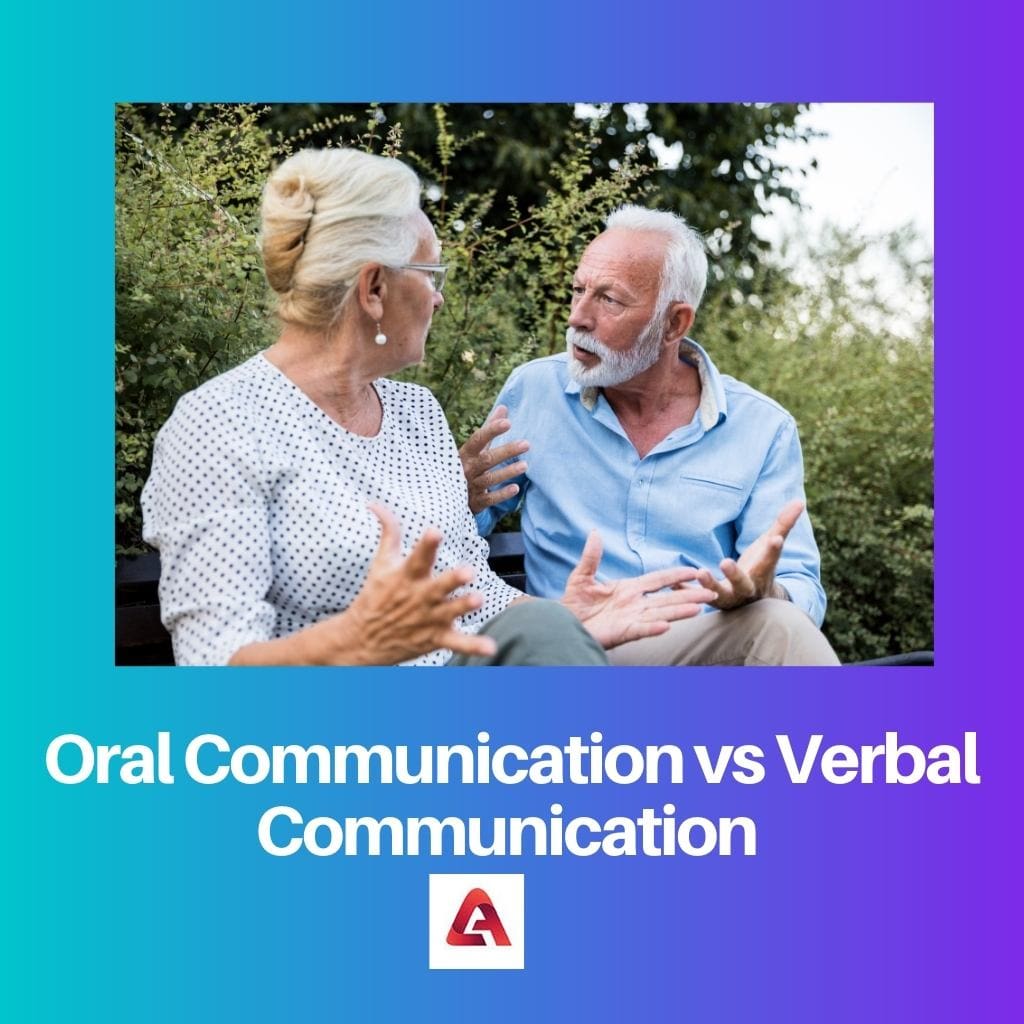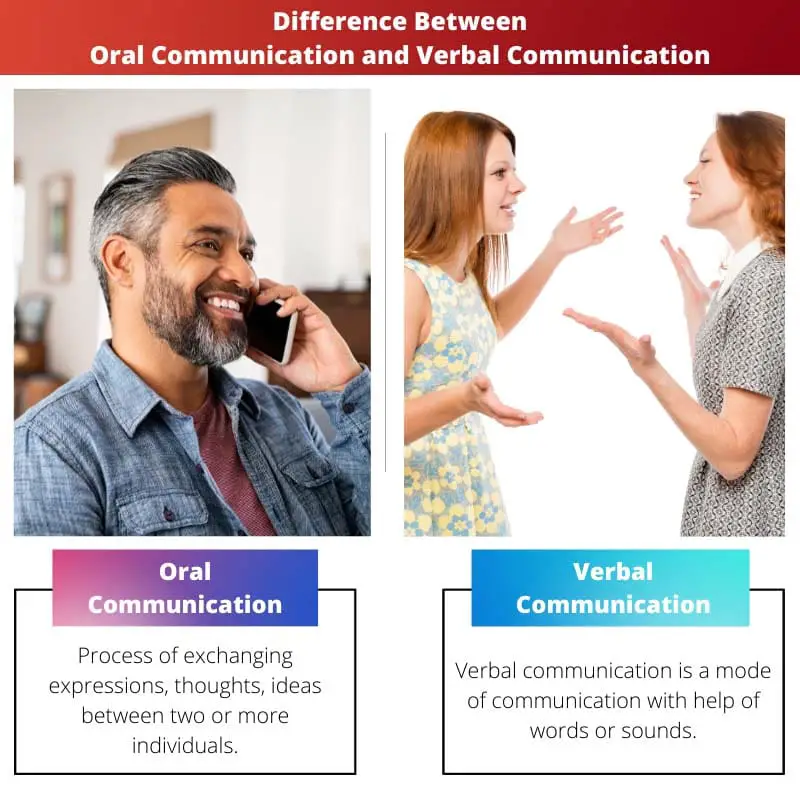Communication is a way of exchanging messages, thoughts, or information from one person to another person.
There are many ways of communication, such as – oral communication, written communication, verbal and non-verbal communication, and visualization.
Oral Communication is a mode of communication done through the mouth.
While Verbal Communication is a mode of communicating ideas, thoughts, and information via sounds or words.
Key Takeaways
- Oral communication involves exchanging information through spoken words, while verbal communication includes spoken and written communication.
- Oral communication allows for immediate feedback and encourages interaction, while written communication can be more formal and allows for reflection and revision.
- Oral communication can include nonverbal cues such as tone of voice and body language, while written communication relies solely on the words used to convey meaning.
Oral Communication vs Verbal Communication
The difference between oral and Verbal Communication is that oral communication involves expressing thoughts and information by speaking face-to-face.
Expressing thoughts is not very difficult, and it has many ways to do it.
For communication between two individuals, a common language is to be settled, which helps them to communicate more efficiently and effectively.

Oral Communication is a method of communicating with individuals face to face directly. It involves speeches, presentations, and passing information from one person to another.
The purpose of oral communication is to confidently deliver the message, your thoughts, or a certain piece of information. It is a way of interacting and effectively connecting with the people out there.
Conversely, Verbal Communication tends to be another mode of communication with the help of sounds and words. Communication through mobile phones, telephonic conversations, radio, television, and sign language is also Verbal Communication.
It does not always require individuals to be face-to-face like oral communication.
Comparison Table
| Parameters of Comparison | Oral Communication | Verbal Communication |
|---|---|---|
| Meaning | Process of exchanging expressions, thoughts, and ideas between two or more individuals. | Verbal communication is a mode of communication with the help of words or sounds. |
| Origin | The word “oral” comes from the Latin word “oralis”, which means “mouth”. | The word “verbal” comes from the Latin word “verbum”, which means “word”. |
| How can it be done? | It can be done directly between two or more individuals. | Communication can be done through writing, sign language, or sounds |
| Proof | No proof can be kept. | Proof can be kept. |
| Usage | “Oral” can be used as an adjective and a noun. | “Verbal” can be a noun, verb, or adjective. |
What is Oral Communication?
Communication is the basic mode of interaction, and oral communication is one of its methods.
It is done face-to-face directly with a person or a group or can be defined as the “interchanging of information, thoughts, ideas, feelings, or emotions through spoken words between two people or more than that. It is called oral communication”.
For example – Exchanging thoughts in business meetings, speeches, group discussions, and live interactions with hundreds and thousands of people are a mode of oral communication.
The importance and need of oral communication are mainly that it helps in gaining self-confidence, allows you to interact directly with numerous individuals, helps in learning things quicker and easier, and allows you to convey and portray emotions better. Oral communication has five basic elements that are –
Sender -> Medium -> Channel -> Receiver -> Feedback
Among everything, the advantages of the same are that it is time-saving, flexible, and accessible, the transparency level between individuals is comparably high, and any misunderstanding/mishap/dispute can be resolved by only communicating with each other.
While with advantages always come disadvantages which are also mentioned. These are – you cannot always rely on oral mode, the conversation cannot be used for legal records, not easy to maintain, and it is not always feasible for everyone.

What is Verbal Communication?
Verbal communication can be defined as expressing or conveying thoughts, ideas, or any information between/or among two-person or groups through sounds or words.
Television, radio, and mobile phones are the modes of communication.
Verbal communication can be subdivided into four further groups –
- Public Communication – Public communication can be defined as interacting with a person in public or addressing many people at once.
- For example – Speeches of ministers in election campaigning.
- Small-Group Communication – Interacting with a small group of people.
- For example – The principal addresses students and teachers in the school assembly.
- Intrapersonal Communication – This is a mode of communication that is required to communicate within itself. For example – Self-thinking and analysis of daily work.
- Interpersonal Communication – Communication is done between two or more people. For example – Interaction through video calls.

Main Differences Between Oral Communication and Verbal Communication
- Oral Communication requires direct face-to-face communication with one or more individuals, while Verbal Communication is not meant to be done directly.
- Oral Communication is a way of interacting with others more effectively and efficiently by speaking, while words mainly communicate verbally.
- Oral Communication is an informal method of communication, while on the other hand, verbal communication is a means of formal interaction between two or more people.
- As oral communication is a direct communication method, it is less time-consuming and flexible. In contrast, it is the opposite of verbal communication as it is highly time-consuming.
- Also, in oral communication, direct and immediate feedback is necessary, while on the other hand, in verbal communication takes some time to get back to the feedback.






